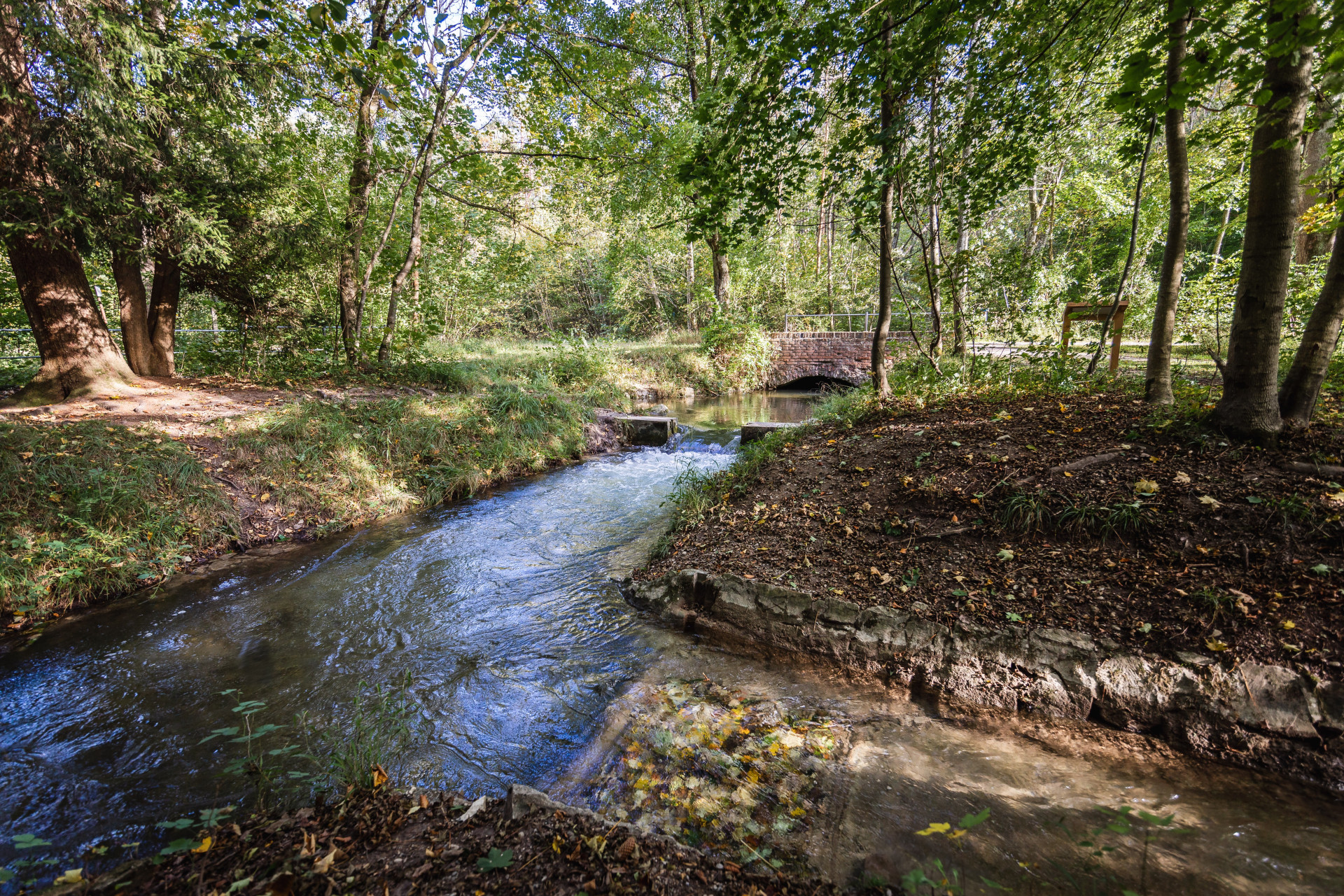
3
Galgenablass (culvert)
The Galgenablass is the most important water crossing in the city forest. This culvert separates spring water and water from the Lech river (= drinking and process water). This Augsburg achievement is still on display here today.
Building history and description
- most important water crossing in the city forest Augsburg
- in the city forest Augsburg, district Siebenbrunn; Close to Siebenbrunner street
- Water supply from approx. 1500 in operation
- Rebuilding 1879, still in operation today
- Crossing of Grenzgraben and Siebenbrunner Bach in the city forest
- gridded inlet in the channel bottom
- Underground pipeline not visible as an integral part of the installation
- Origin of the name: before the construction of today's Galgenablasses was from the 16th to the 19th century, a lock and Schütz (wooden wall), Grenzgraben was led in wooden bridge over the Siebenbrunner Bach, Schütz was suspended from a device that resembled a gallows
Use and purpose
- Separation of drinking and process water (source and Lech water)
- Düker (pressure line for crossing a river) separates Grenzgraben (source and drinking water) from Siebenbrunner Bach (Lech water)
- Spring water today serves to supply the animals in the Zoological Garden Augsburg
- Grenzgraben and Brunnenbach for a long time the most important supplier of drinking water in the city
- 1870 deepening of the Siebenbrunner Bach, since then the Grenzgraben runs under the Siebenbrunner Bach
- Grenzgraben until 1806 as a borderline between the area of the Free Imperial City of Augsburg and the Duchy of Bavaria
- Galgenablass culvert as a significant place of:
- separation of process water and drinking water began in the 16th century as an early innovation of the Augsburg water system that is almost unique in Europe
- close association with the three waterworks in the old town as well as the three monumental fountains
- Location in the nature protection and drinking water protection area of the city forest
- Consolidation and long-term safeguarding of the natural foundations of water wealth as well as sustainable protection of the water catchment area by dismantling of settlements and control of agriculture
Authenticity and unique features
- only reconstruction received from 1879, underground pipeline not visible as an integral part of the plant
- most important water crossing of the city forest
- bears witness to early awareness of the separation of drinking and process water
- Link between the high drain (Lechanstich and origin of the canal system) and the waterworks at the Red Gate (raising the drinking water by process water)




